 W
WGnosticism is a collection of religious ideas and systems which originated in the first century AD among early Christian and Jewish sects. These various groups emphasised personal spiritual knowledge (gnosis) over the orthodox teachings, traditions, and authority of the church. Viewing material existence as flawed or evil, Gnostic cosmogony generally presents a distinction between a supreme, hidden God and a malevolent lesser divinity who is responsible for creating the material universe. Gnostics considered the principal element of salvation to be direct knowledge of the supreme divinity in the form of mystical or esoteric insight. Many Gnostic texts deal not in concepts of sin and repentance, but with illusion and enlightenment.
 W
WAaskouandy is a gnostic symbol taken from Native American beliefs, especially Iroquois folklore.
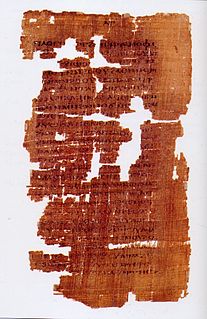 W
WThe early 3rd-century text called Acts of Thomas is one of the New Testament apocrypha. References to the work by Epiphanius of Salamis show that it was in circulation in the 4th century. The complete versions that survive are Syriac and Greek. There are many surviving fragments of the text. Scholars detect from the Greek that its original was written in Syriac, which places the Acts of Thomas in Edessa. The surviving Syriac manuscripts, however, have been edited to purge them of the most unorthodox overtly Encratite passages, so that the Greek versions reflect the earlier tradition.
 W
WThe Alogi or Alogoi were a group of heterodox Christians in Asia Minor that flourished c. 200 CE, and taught that the Gospel of John and the Apocalypse were not the work of the Apostle, but his adversary Cerinthus. What we know of them is derived from their doctrinal opponents, whose literature is extant, particularly St. Epiphanius of Salamis. It was Epiphanius who coined the name "Alogi" as a word play suggesting that they were both illogical (anti-logikos) and they were against the Christian doctrine of the Logos. While Epiphanius does not specifically indicate the name of its founder, Dionysius Bar-Salibi, citing a lost work of Hippolytus, writes in his commentary on the Apocalypse,Hippolytus the Roman says: A man appeared, named Caius, saying that the Gospel is not by John, nor the Apocalypse but that it is by Cerinthus the heretic.
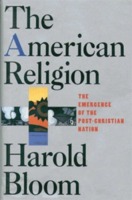 W
WThe American Religion: The Emergence of the Post-Christian Nation is a book by literary critic Harold Bloom, in which the author covers the topic of religion in the United States from a perspective which he calls religious criticism. Religious denominations Bloom discusses include The Church of Jesus Christ of Latter-day Saints, Christian Science, the Seventh-day Adventist Church, Jehovah's Witnesses, and the Southern Baptist Convention.
 W
WBogomilism was a Christian neo-Gnostic or dualist sect founded in the First Bulgarian Empire by the priest Bogomil during the reign of Tsar Peter I in the 10th century. It most probably arose in what is today the region of Macedonia.
 W
WThe Book of Elchasai or the Book of Elxai is a lost prophetic book, written during the reign of Trajan, that contained laws and apocalyptic prophecies pertaining to Jewish Christian and Gnostic doctrines. It is known only from fragments quoted in the early Christian writings of Hippolytus of Rome, Eusebius, Epiphanius of Salamis, and Origen. The book was used by a number of Transjordanian sects, including Ebionites, Essenes, Nazarenes, and especially by Elcesaites whom based their origins from.
 W
WThe Books of Jeu are two Gnostic texts. Though independent works, both the First Book of Jeu and the Second Book of Jeu appear, in Coptic, in the Bruce Codex.
 W
WJean Bricaud, also known as Tau Jean II, was a French student of the occult and esoteric matters. Bricaud was heavily involved in the French neo-Gnostic movement. He was consecrated a Gnostic bishop on July 21, 1913 by bishop Louis-Marie-François Giraud. He was the Patriarch of the Église Gnostique Universelle and a central figure in the various lines of the apostolic succession of subsequent Gnostic churches, as well as a spiritual heir of Jules Doinel. From 1916 he was head of the Ordre Martiniste. He was a friend of the occultists Papus and August Vandekerkhove.
 W
WLaurence Caruana is a Maltese artist, writer, and lecturer noted for his contribution to the contemporary visionary art movement, particularly through his Manifesto of Visionary Art.
 W
WJules-Benoît Stanislas Doinel du Val-Michel, also simply Jules Doinel, was an archivist and the founder of the first Gnostic church in modern times.
 W
WThe Druze are an Arabic-speaking esoteric ethnoreligious group originating in Western Asia who self-identify as The People of Monotheism (Al-Muwaḥḥidūn). Jethro of Midian is considered an ancestor of the Druze, who revere him as their spiritual founder and chief prophet. It is a monotheistic and Abrahamic religion based on the teachings of Hamza ibn Ali ibn Ahmad and the sixth Fatimid caliph, al-Hakim bi-Amr Allah, and Ancient Greek philosophers such as Plato, Aristotle, Pythagoras, and Zeno of Citium.
 W
WThe Elcesaites, Elkasaites, Elkesaites or Elchasaites were an ancient Jewish Christian sect in Lower Mesopotamia, then the province of Asoristan in the Sasanian Empire.
 W
WGérard Anaclet Vincent Encausse, whose esoteric pseudonym was Papus, was a Spanish-born French physician, hypnotist, and popularizer of occultism, who founded the modern Martinist Order.
 W
WThe Epistles of Wisdom or Rasa'il al-Hikmah is a corpus of sacred texts and pastoral letters by teachers of the Druze Faith, which has currently close to a million faithful, mainly in Lebanon, Syria, Israel and Jordan.
 W
WErgo Proxy is a Japanese cyberpunk suspense anime television series, produced by Manglobe, directed by Shūkō Murase and written by Dai Satō. The series ran for 23 episodes from February to August 2006 on the WOWOW satellite network. It is set in a future where humans and AutoReiv androids coexist peacefully until a virus gives the robots self-awareness, causing them to commit a series of murders. Inspector Re-L Mayer is assigned to investigate, discovering there is a more complicated plot behind it that involves a humanoid species known as "Proxy" who are the subject of secret government experiments.
 W
WThe First Apocalypse of James is an early third century Gnostic apocalypse.
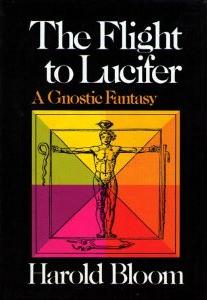 W
WThe Flight to Lucifer: A Gnostic Fantasy is a 1979 fantasy novel by American critic Harold Bloom, inspired by his reading of David Lindsay's fantasy novel A Voyage to Arcturus (1920). The plot, which adapts Lindsay's characters and narrative and features themes drawn from Gnosticism, concerns Thomas Perscors, who is transported from Earth to the planet Lucifer by Seth Valentinus.
 W
WThe Gnostic Church of France is a neo-Gnostic Christian organisation formed by Jules Doinel in 1890, in France. It is the first Gnostic church in modern times.
 W
WThe Great Architect of the Universe is a conception of God discussed by many Christian theologians and apologists. As a designation it is used within Freemasonry to represent the deity neutrally. It is also a Rosicrucian conception of God, as expressed by Max Heindel. The concept of the demiurge as a grand architect or a great architect also occurs in gnosticism as well as Hinduism.
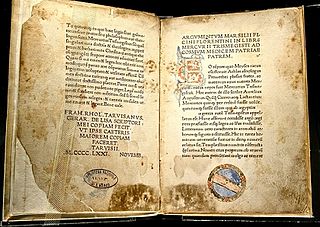 W
WThe Hermetica are Egyptian-Greek wisdom texts, the bulk of which date to between the 1st century BCE and the 4th century CE, though the oldest parts may go back to the 5th or 6th century BCE. They are mostly presented as dialogues in which a teacher, generally identified as Hermes Trismegistus, enlightens a disciple. The texts form the basis of Hermeticism. They discuss the divine, the cosmos, mind, and nature. Some touch upon alchemy, astrology, and related concepts.
 W
WThe Jesus Mysteries: Was the "Original Jesus" a Pagan God? is a 1999 book by British authors Timothy Freke and Peter Gandy, which advances the argument that early Christianity originated as a Greco-Roman mystery cult and that Jesus was invented by early Christians based on an alleged pagan cult of a dying and rising "godman" known as Osiris-Dionysus, whose worship the authors claim was manifested in the cults of Osiris, Dionysus, Attis, and Mithras. This thesis is a fringe theory and is not accepted by mainstream scholars.
 W
WThe Letter of Peter to Philip is a Gnostic Christian epistle found in the Nag Hammadi Library in Egypt. It was dated to be written around late 2nd century to early 3rd century CE and focuses on a post-crucifixion appearance and teachings of Jesus Christ to the apostles on the Mount of Olives, or Mount Olivet.
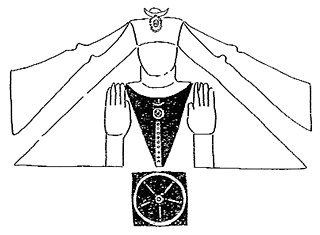 W
WManichæism was a major religion founded in the 3rd century AD by the Persian prophet Mani in the Sasanian Empire.
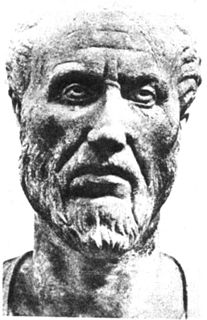 W
WGnosticism refers to a collection of religious groups originating in Jewish religiosity in Alexandria in the first few centuries CE. Neoplatonism is a school of Hellenistic philosophy that took shape in the 3rd century, based on the teachings of Plato and some of his early followers. While Gnosticism was influenced by Middle Platonism, neo-Platonists from the third century onward rejected Gnosticism.
 W
WNous, sometimes equated to intellect or intelligence, is a term from classical philosophy for the faculty of the human mind necessary for understanding what is true or real. English words such as "understanding" are sometimes used, but three commonly used philosophical terms come directly from classical languages: νοῦς or νόος, intellēctus and intellegentia. To describe the activity of this faculty, the word "intellection" is sometimes used in philosophical contexts, as well as the Greek words noēsis and noeîn. This activity is understood in a similar way to the modern concept of intuition.
 W
WThe Ophite Diagrams are ritual and esoteric diagrams used by the Ophite sect of Gnosticism, who revered the serpent from the Garden of Eden as a symbol of wisdom, which the malevolent Demiurge tried to hide from Adam and Eve.
 W
WPoor Dionis or Poor Dionysus is an 1872 prose work by Romanian poet Mihai Eminescu, classified by scholars as either a novel, a novella or a modern fairy tale. It is a liberal interpretation of contemporary German philosophy and ancient motifs, discussing themes such as time travel and reincarnation through the lens of post-Kantian idealism. Its eponymous central character, a daydreaming scholar, moves between selves over time and space, between his miserable home, his earlier existence as a monk in 15th-century Moldavia, and his higher-level existence as a celestial Zoroaster.
 W
WJames Morgan Pryse was an author, publisher, and theosophist.
 W
WSamael is an archangel in Talmudic and post-Talmudic lore; a figure who is the accuser (Ha-Satan), seducer, and destroyer (Mashhit).
 W
WSophia is a central idea in Hellenistic philosophy and religion, Platonism, Gnosticism and Christian theology. Originally carrying a meaning of "cleverness, skill", the later meaning of the term, close to the meaning of Phronesis, was significantly shaped by the term philosophy as used by Plato.
 W
WThe Gospel of Thomas is a non-canonical sayings gospel. It was discovered near Nag Hammadi, Egypt, in December 1945 among a group of books known as the Nag Hammadi library. Scholars speculate that the works were buried in response to a letter from Bishop Athanasius declaring a strict canon of Christian scripture. Scholars have proposed dates of composition as early as AD 60 and as late as AD 140.
 W
WValis is a 1981 science fiction novel by American writer Philip K. Dick, it is one book of a three part series. The title is an acronym for Vast Active Living Intelligence System, Dick's gnostic vision of one aspect of God. The book features heavy auto-biographical elements, and draws inspiration from Dick's own religious experiences over the previous decade.
 W
WA Voyage to Arcturus is a novel by the Scottish writer David Lindsay, first published in 1920. It combines fantasy, philosophy, and science fiction in an exploration of the nature of good and evil and their relationship with existence. Described by critic, novelist, and philosopher Colin Wilson as the "greatest novel of the twentieth century", it was a central influence on C. S. Lewis' Space Trilogy, and through him on J. R. R. Tolkien, who said he read the book "with avidity". Clive Barker called it "a masterpiece" and "an extraordinary work ... quite magnificent."